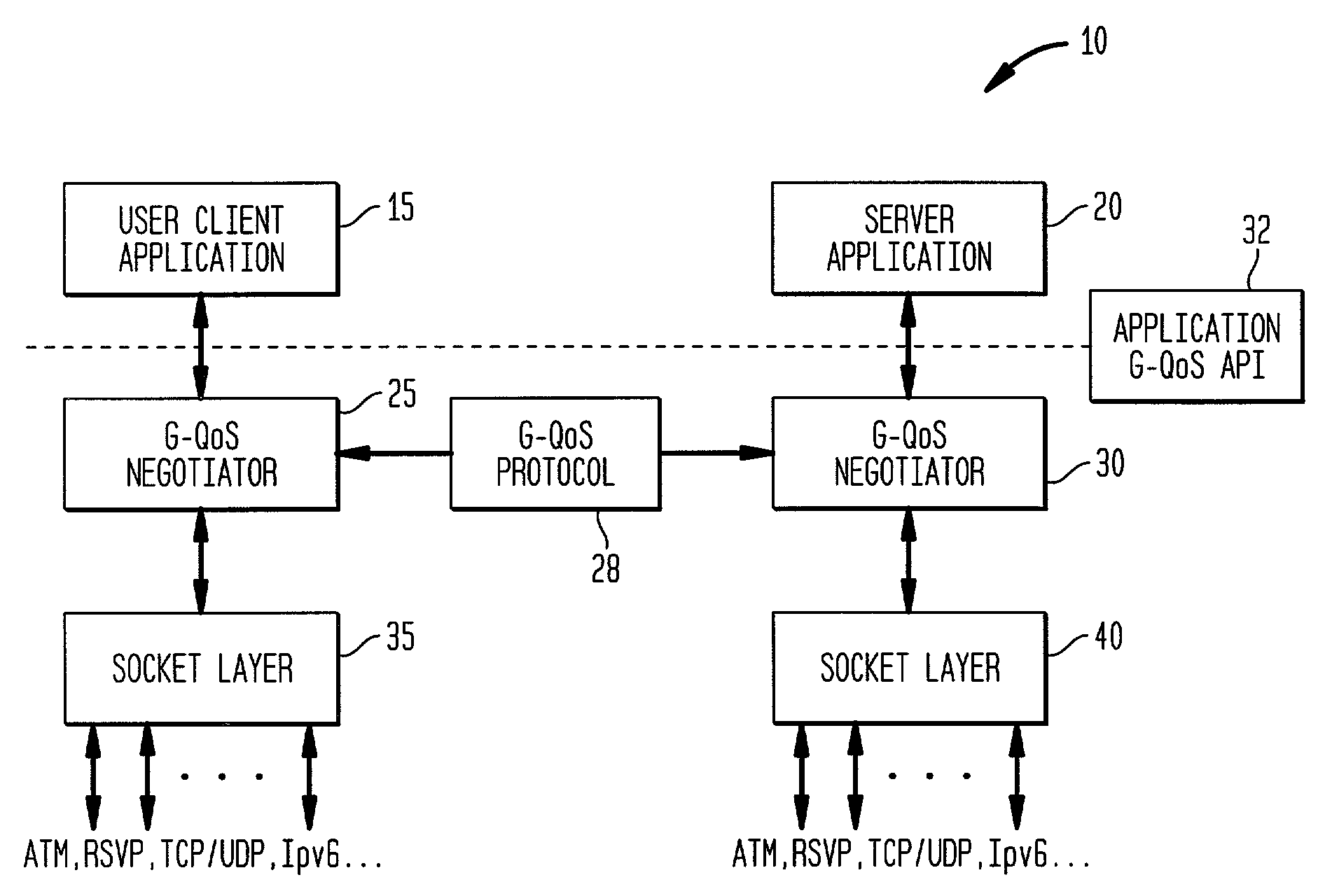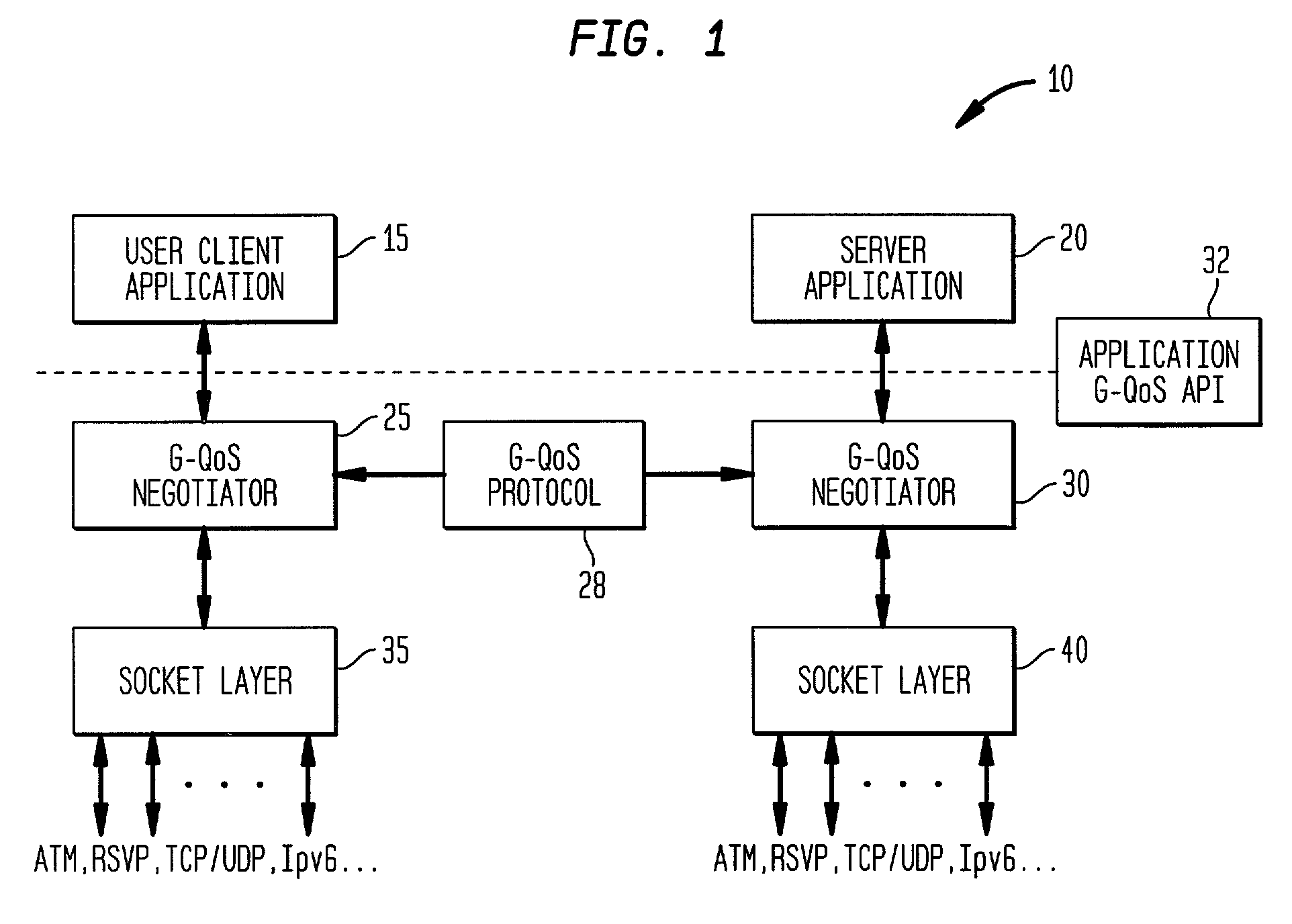Generic quality of service protocol and architecture for user applications in multiple transport protocol environments
a transport protocol and user application technology, applied in the field of generic quality of service (“ qos”) protocol for user applications, can solve the problems of limited to specific transport protocol types and network architectures, lack of generic qos protocol and maintenance procedures, and lack of ability to span a variety of such protocol types and architectures. achieve the effect of convenient implementation and maintenan
- Summary
- Abstract
- Description
- Claims
- Application Information
AI Technical Summary
Benefits of technology
Problems solved by technology
Method used
Image
Examples
first embodiment
[0036]In a first embodiment, G-QoS API 32 is implemented as an application-based API, wherein applications can be connected to the network using connection-oriented or connectionless transport services. In this arrangement, G-QoS protocol 28 G-QoS negotiators 25, 30 are controlled by the API to establish a desired level of QoS for the application and to synchronize the client and server so that the desired QoS level is maintained therebetween.
second embodiment
[0037]Alternatively, G-QoS API 32 can be configured in a second embodiment, whereby the API utilizes G-QoS protocol 28 to define sockets that are necessary to support a QoS level for the application. According to this implementation, G-QoS protocol 28, in conjunction with sockets, may be utilized to maintain a desired QoS level for IP-based traffic, such as IP and Virtual Private Network (“VPN”) tunneling.
[0038]FIG. 2 is a diagram showing in detail the components of the G-QoS protocol 28 of the present invention. As mentioned earlier, G-QoS protocol 28 is used to exchange messages between the G-QoS negotiators 25, 30 of FIG. 1, and to store application profile, client profile, transport profile, and QoS information for usage by both the G-QoS negotiators and the DPMAs residing therein to negotiate, establish, and maintain the desired QoS level. G-QoS protocol 28 contains a variety of fields of information, and can be expanded to incorporate additional profiles, protocols, and other ...
PUM
 Login to View More
Login to View More Abstract
Description
Claims
Application Information
 Login to View More
Login to View More - R&D
- Intellectual Property
- Life Sciences
- Materials
- Tech Scout
- Unparalleled Data Quality
- Higher Quality Content
- 60% Fewer Hallucinations
Browse by: Latest US Patents, China's latest patents, Technical Efficacy Thesaurus, Application Domain, Technology Topic, Popular Technical Reports.
© 2025 PatSnap. All rights reserved.Legal|Privacy policy|Modern Slavery Act Transparency Statement|Sitemap|About US| Contact US: help@patsnap.com



